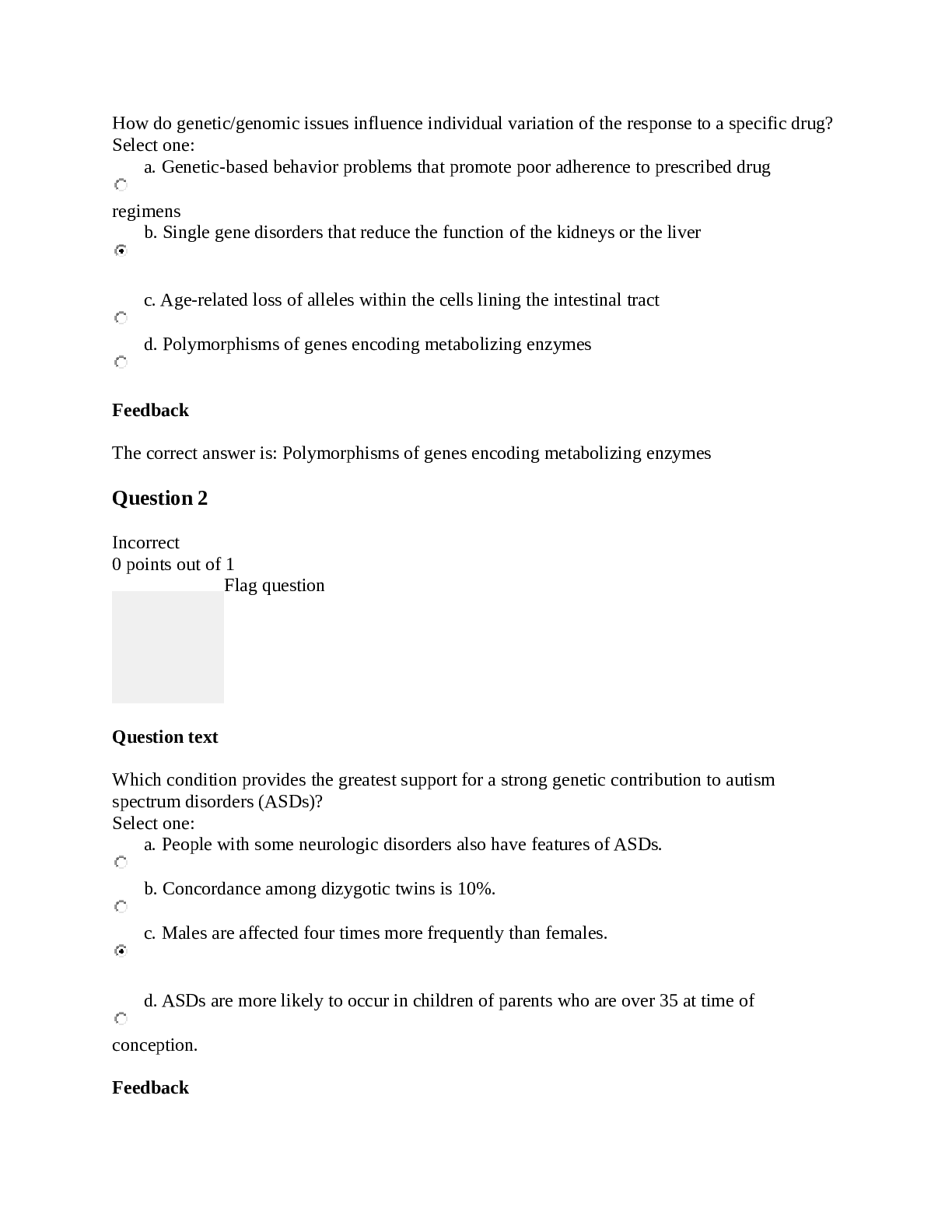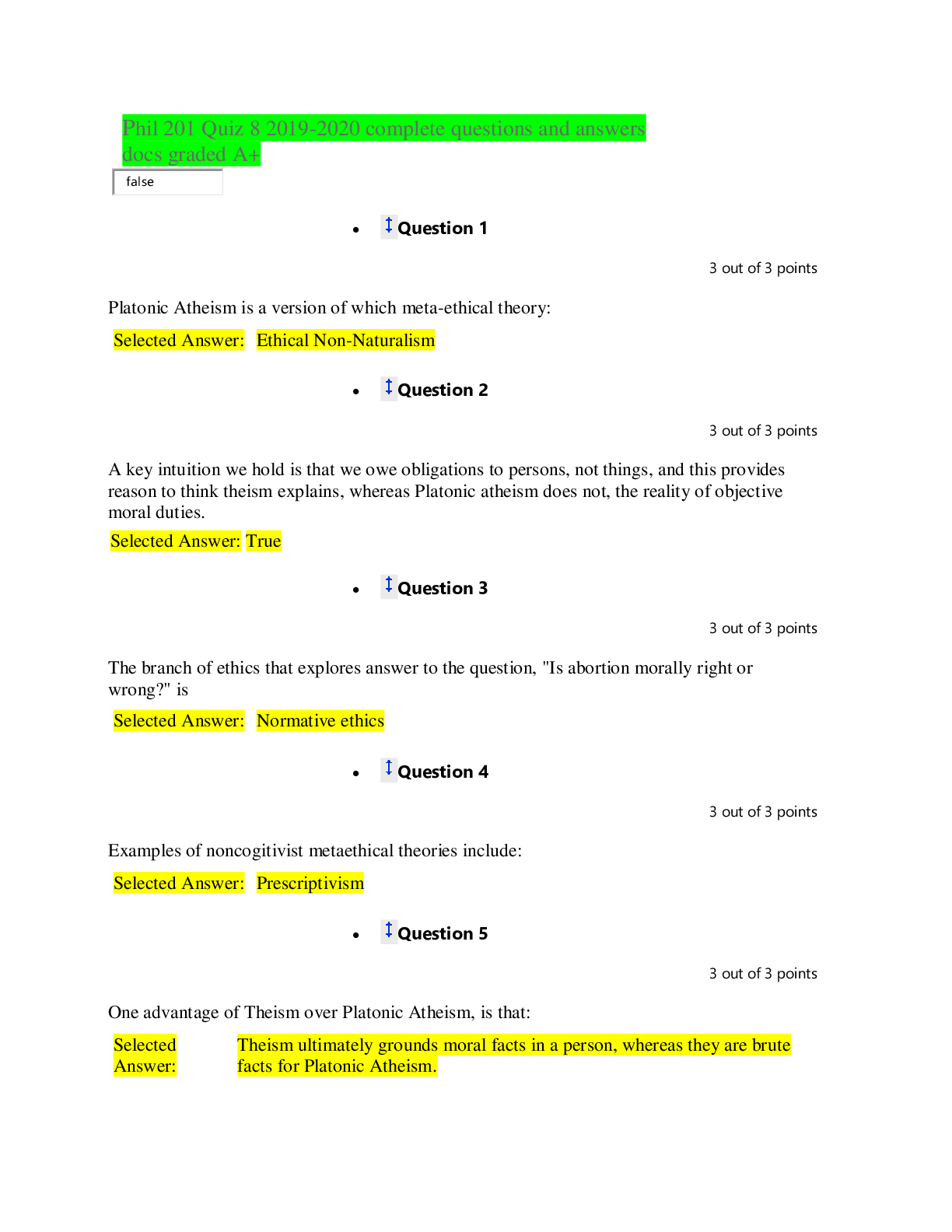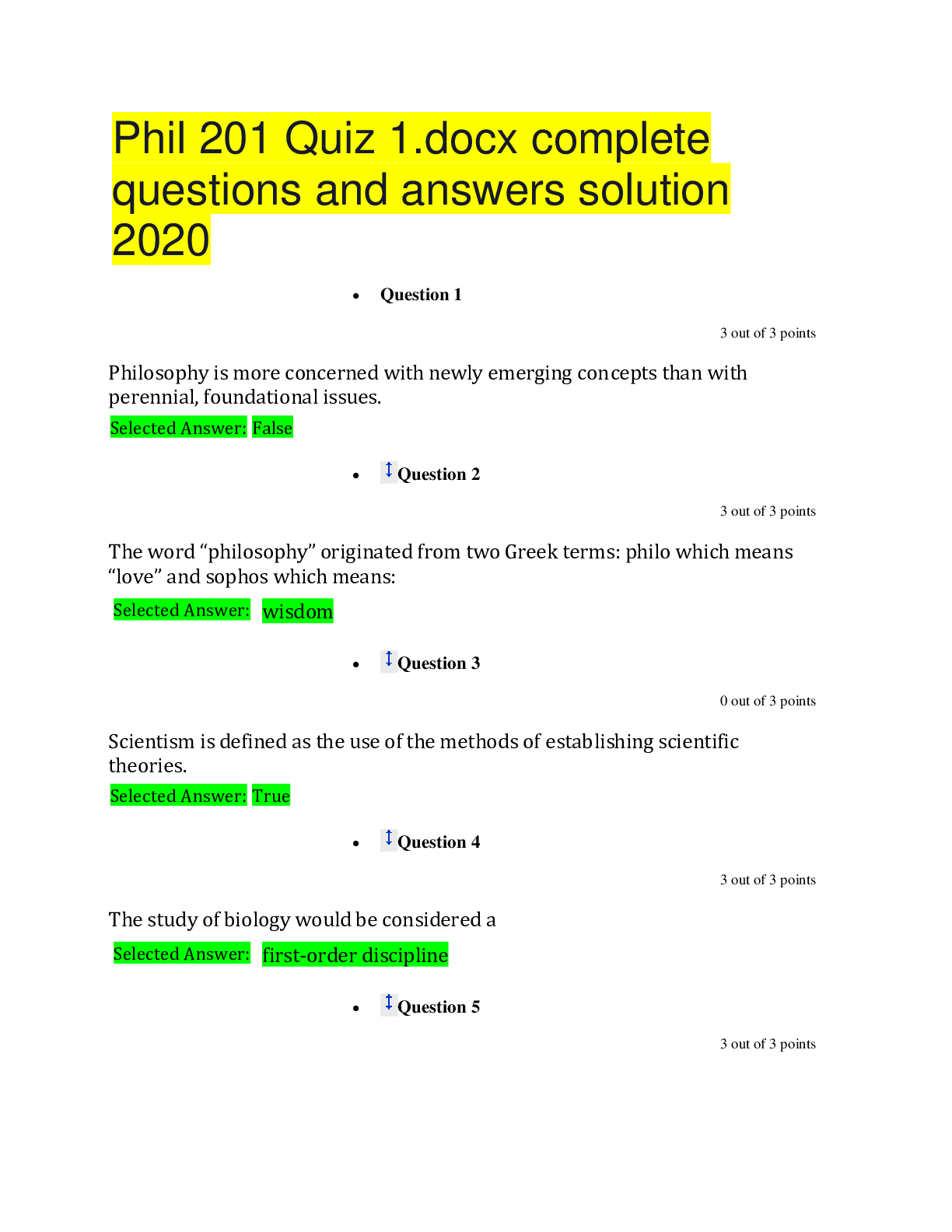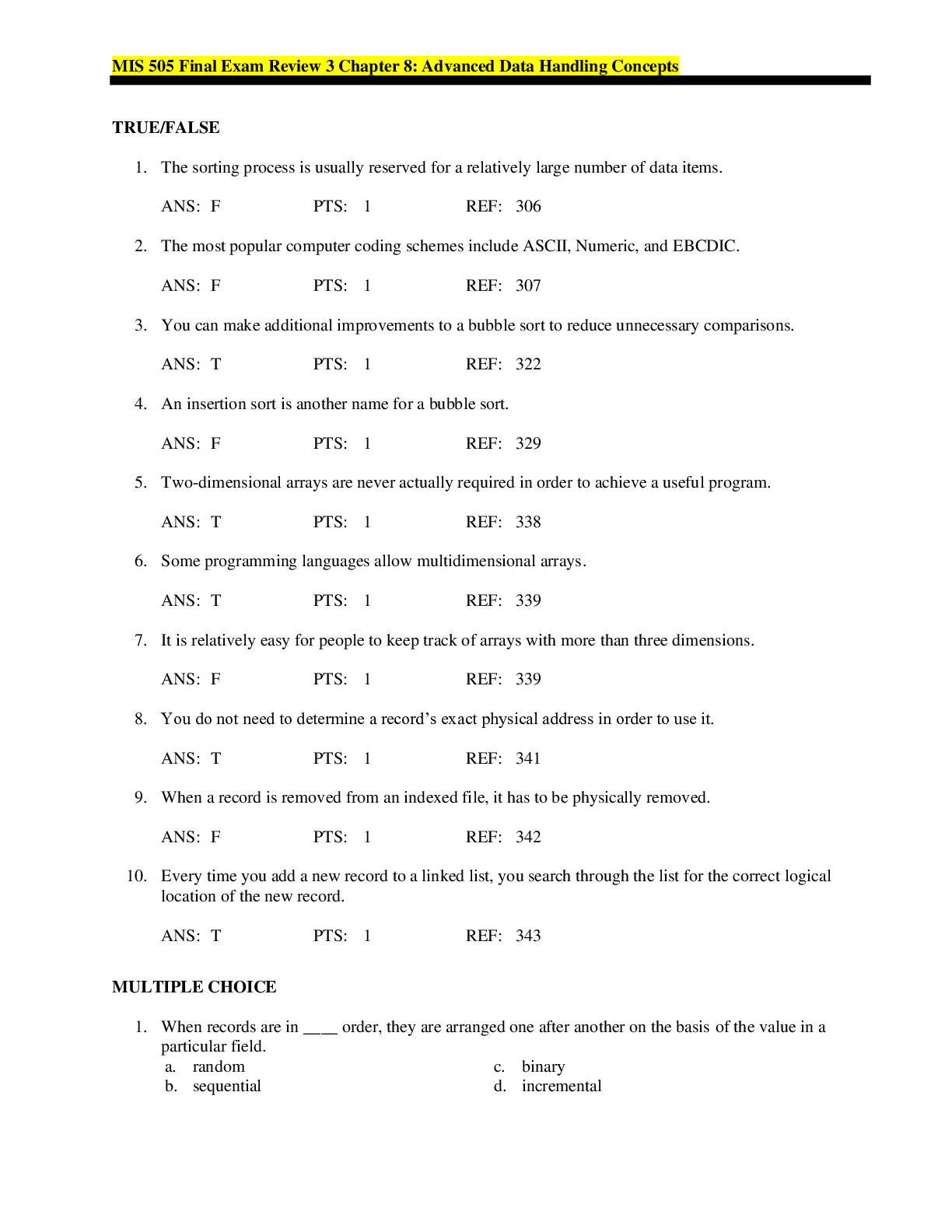*NURSING > QUESTIONS & ANSWERS > ADVANCED NURSING PRACTICE exam solution complete questions and answers doc 2020 (All)
ADVANCED NURSING PRACTICE exam solution complete questions and answers doc 2020
Document Content and Description Below
ADVANCED NURSING PRACTICE exam solution complete questions and answers doc 2020 Section 3. Eye Problems MULTIPLE CHOICE 1. An acutely presenting, erythematous, tender lump within the eyelid ... is called: A. Blepharitis B. Hordeolum C. Chalazion D. Iritis 2. A granulomatous infection of a meibomian gland that presents as a painless swelling on the eyelid is called a: A. Iritis B. Chalazion C. Viral conjunctivitis D. Nuclear cataracts 3. Billy presents with edematous and erythematous lid margins and closer visual inspection with a Wood’s lamp reveals scaling. Which of the following conditions could be the diagnosis? A. Hordeolum B. Chalazion C. Blepharitis D. Iritis 4. Which of the following is true about epiphora? A. It is uncommon that it’s a response to dry eye. B. It will lead to decreased tearing. C. It is common in infants. D. It will lead to increased irritation. 5. The clinician is seeing a patient complaining of red eye. The clinician suspects conjunctivitis. The presence of mucopurulent discharge suggests which type of conjunctivitis? A. Viral conjunctivitis B. Keratoconjunctivitis C. Bacterial conjunctivitis D. Allergic conjunctivitis 6. Which is appropriate patient education to provide regarding bacterial conjunctivitis? A. The patient should continue to go to his or her job as a day-care teacher. B. The patient should make sure to practice proper hand washing. C. The patient should touch his or her eyes to apply medication. D. The patient will be infectious for only 24 hours after diagnosis of bacterial conjunctivitis. 7. What of the following in the patient’s history would lead the provider to diagnose a corneal abrasion? A. Patient’s mother had a corneal abrasion. B. Patient wears glasses. C. Patient complains, “I feel like something is in my right eye.” D. Patient complains, “My eyes feel so dry.” 8. Which subtype of cataracts is characterized by significant nearsightedness and a slow indolent course? A. Nuclear cataracts B. Cortical cataracts C. Posterior cataracts D. Immature cataracts 9. Which of the following produces a slow and painless visual field loss that usually begins peripherally? A. Posterior cataracts B. Open-angle glaucoma C. Immature cataracts D. Macular degeneration 10. Which of the following is TRUE regarding dietary supplements and cataracts? A. High doses of vitamin E prevent the progression of cataracts. B. Low doses of vitamin C increase age-related cataract development. C. There is no evidence that concretely proves the benefit of high-dose vitamin E to prevent cataracts. D. Weekly lutein prevents the formation of cataracts. 11. Which of the following contribute to the development of chronic open-angle glaucoma? A. Myopia B. Multiple sclerosis C. Hyperopia D. Small cornea 12. A 65-year-old man presents to the clinician with complaints of increasing bilateral peripheral vision loss, poor night vision, and frequent prescription changes that started 6 months previously. Recently, he has also been seeing halos around lights. The clinician suspects chronic open-angle glaucoma. Which of the following statements is true concerning the diagnosis of chronic open-angle glaucoma? A. The presence of increased intraocular pressure measured by tonometry is definitive for the diagnosis of open-angle glaucoma. B. The clinician can definitively diagnosis open-angle glaucoma based on the subjective complaints of the patient. C. Physical diagnosis relies on gonioscopic evaluation of the angle by an ophthalmologist. D. Early diagnosis is essential in order to reverse any damage that has occurred to the optic nerve. 13. Acute angle-closure glaucoma involves a sudden severe rise in intraocular pressure. Which of the following ranges represents normal intraocular pressure? A. 0 to 7 mm Hg B. 12 to 22 mm Hg C. 22 to 40 mm Hg D. 40 to 80 mm Hg 14. Which of the following education points is essential to provide to the patient with glaucoma? A. Their medication may have adverse effects. B. Only the patient can instill eye drops. C. Eye infections are common and are not a concern. D. Eye exams must happen monthly. 15. With regards to the relationship between diabetes and diabetic retinopathy, which of the following is TRUE? A. Diabetic retinopathy only occurs in patients with type 1 diabetes. B. Diabetic retinopathy is always the first sign that a patient has diabetes. C. The longer the patient has had diabetes, the more likelihood that they will develop retinopathy. D. Diabetic retinopathy only occurs in patients with type 2 diabetes. 16. As diabetic retinopathy progresses, the presence of “cotton wool” spots can be detected. “Cotton wool” spots refer to: A. Microvascular infarctions B. Blood vessel proliferation C. Venous beading D. Retinal hemorrhage 17. Marie has diabetes mellitus with proliferative retinopathy. How often should she see her ophthalmologist? A. Monthly B. Every 2 months C. Every 3 to 4 months D. Annually 18. Who of the following is a patient with risk factors for macular degeneration? A. 50-year-old African American male B. 65-year-old Caucasian female C. 40-year-old Asian man D. 90-year-old Hispanic female 19. Sarah is a patient with a complaint of feeling like she has “sand in her eye.” Which is the most likely diagnosis? A. Cataracts B. Diabetic retinopathy C. Macular degeneration D. Keratitis sicca 20. A patient was diagnosed with gradual floaters that the provider determined did not require treatment. What is a common complaint when a patient has benign floaters? A. “In my right eye I see little dots when I stare in the direction of the sun.” B. “In both eyes I see bright white dots that block my vision when I am in a black room.” C. “I can’t see in my left eye when I look into a bright room.” D. “When I am in a dark room a big white dot blocks my field of vision in my left eye.” 21. A patient is complaining of seeing “flashing lights.” What is the provider’s next step? A. Send the patient to ophthalmology immediately to evaluate for macular degeneration. B. Tell the patient that it is normal to see flashing lights occasionally. C. Send the patient to ophthalmology immediately to evaluate for a retinal tear or detachment. D. Tell the patient that they can wait to be seen by ophthalmology for 1 month. 22. Robin presents with tearing in her right eye that started this morning. What is the most likely cause in the provider’s differential diagnosis? A. Dry eye B. Foreign body in the eye C. Diabetic retinopathy D. Cataract 23. Which of the following medications used in the treatment of glaucoma works by constricting the pupils to open the angle and allow aqueous fluid to escape? A. Pilocarpine B. Timolol C. Brinzolamide D. Acetazolamide [Show More]
Last updated: 1 year ago
Preview 1 out of 8 pages
Instant download
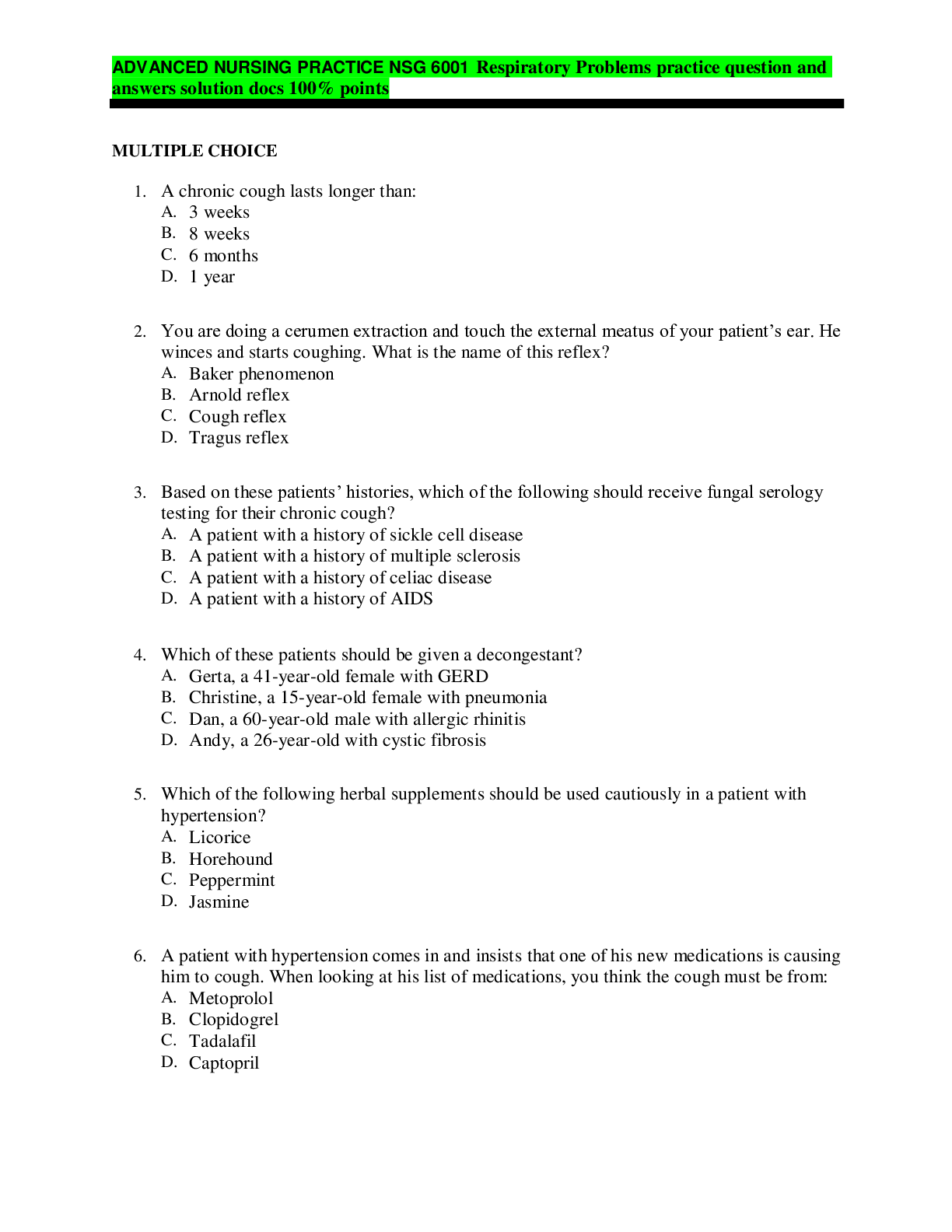
Buy this document to get the full access instantly
Instant Download Access after purchase
Add to cartInstant download
Reviews( 0 )
Document information
Connected school, study & course
About the document
Uploaded On
Dec 03, 2020
Number of pages
8
Written in
Additional information
This document has been written for:
Uploaded
Dec 03, 2020
Downloads
0
Views
207




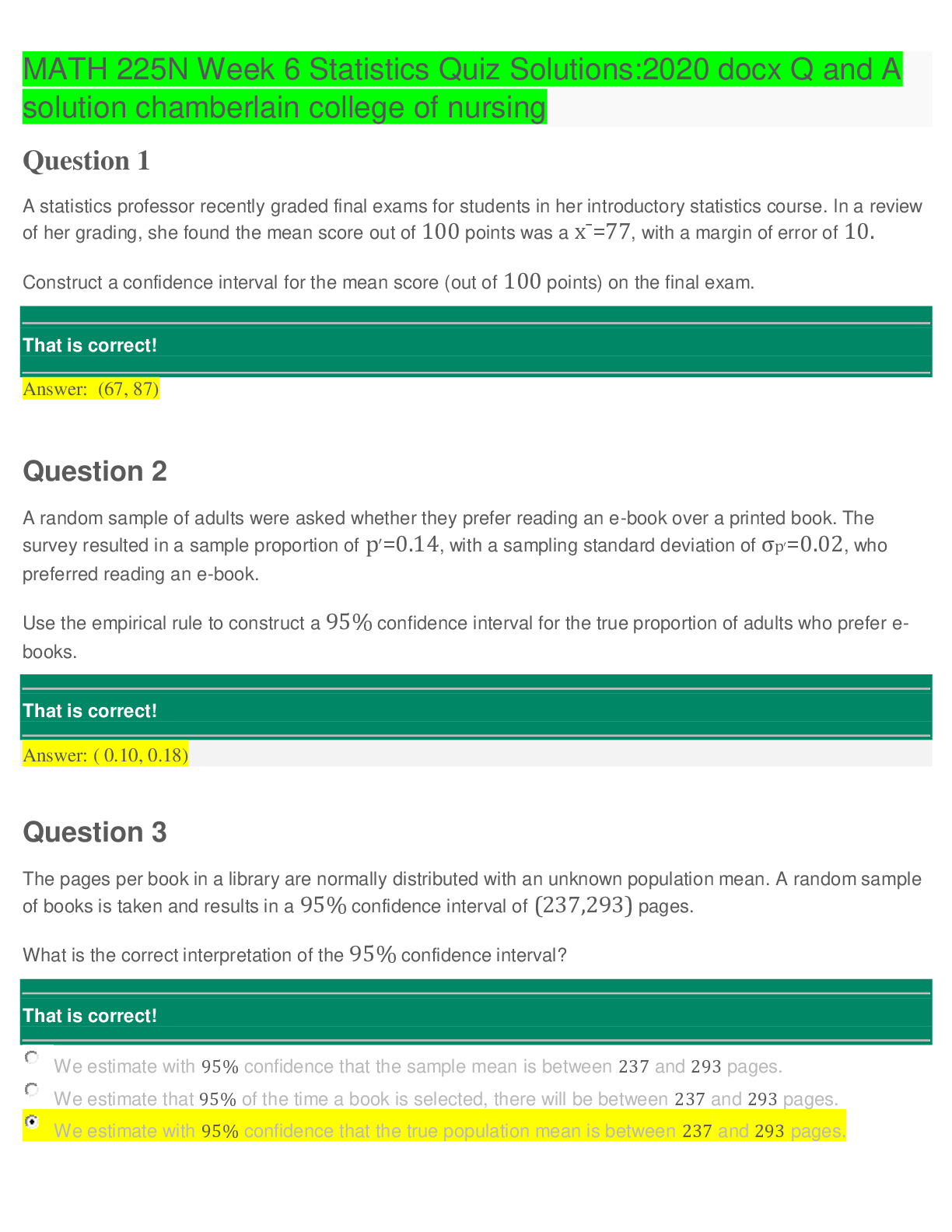

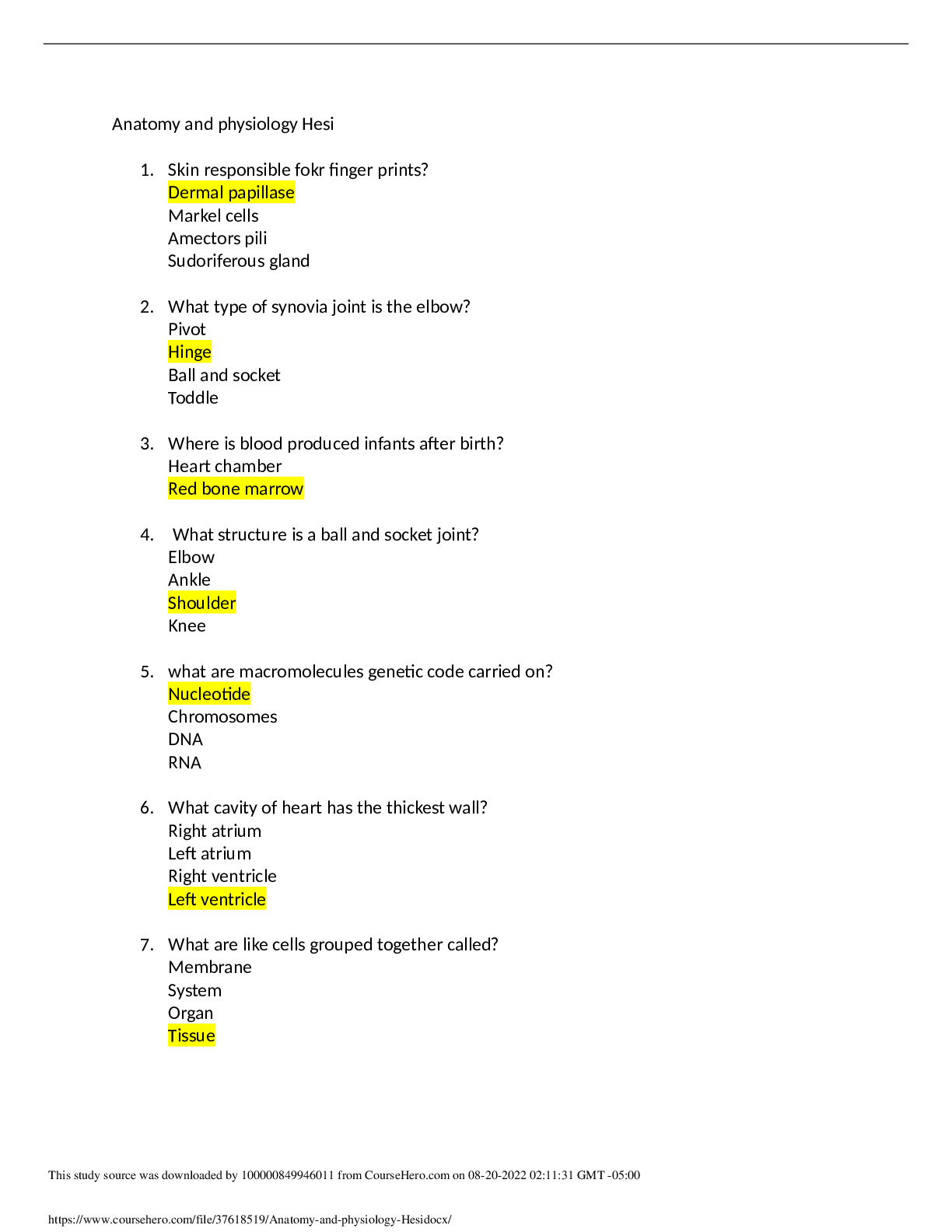
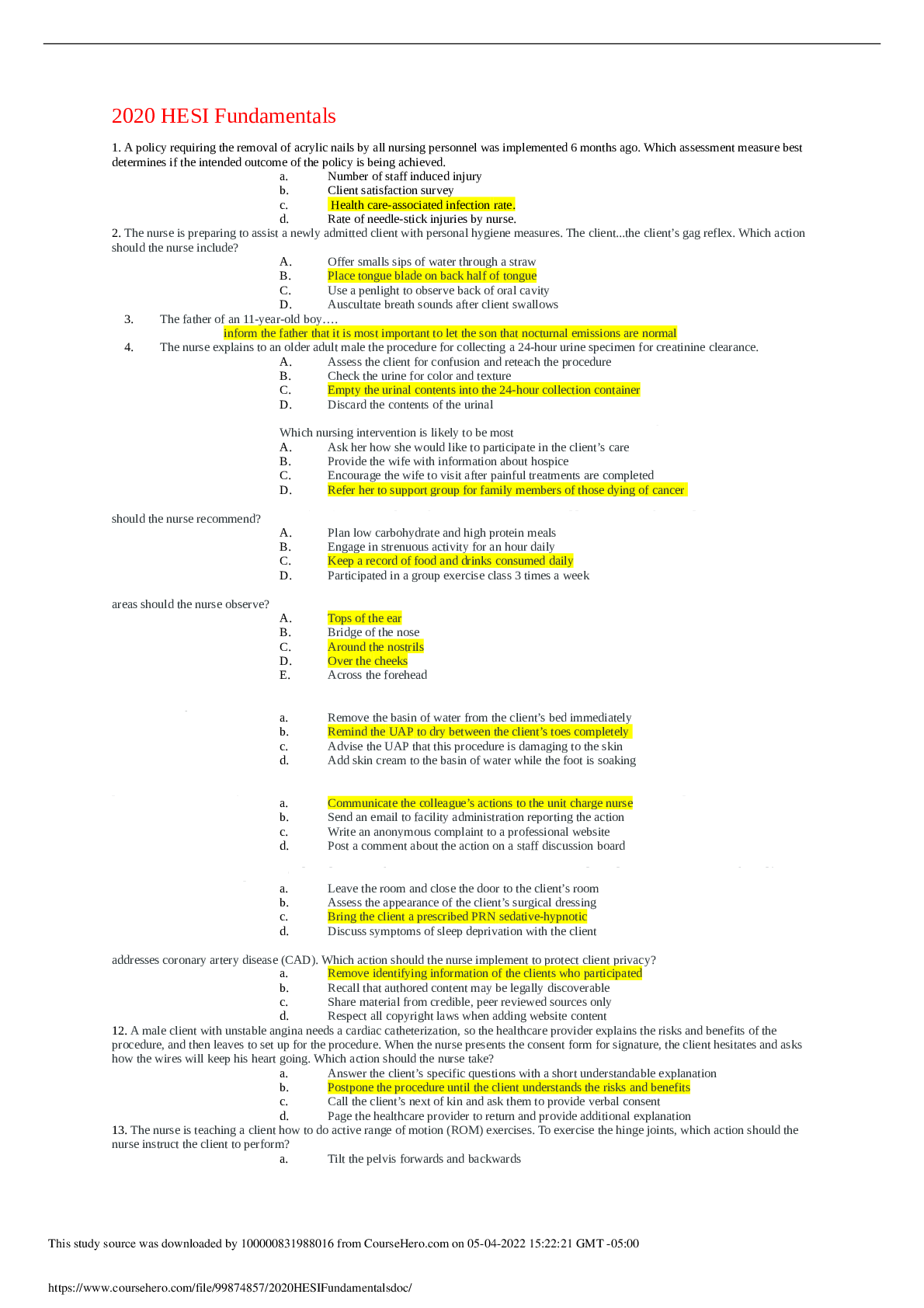

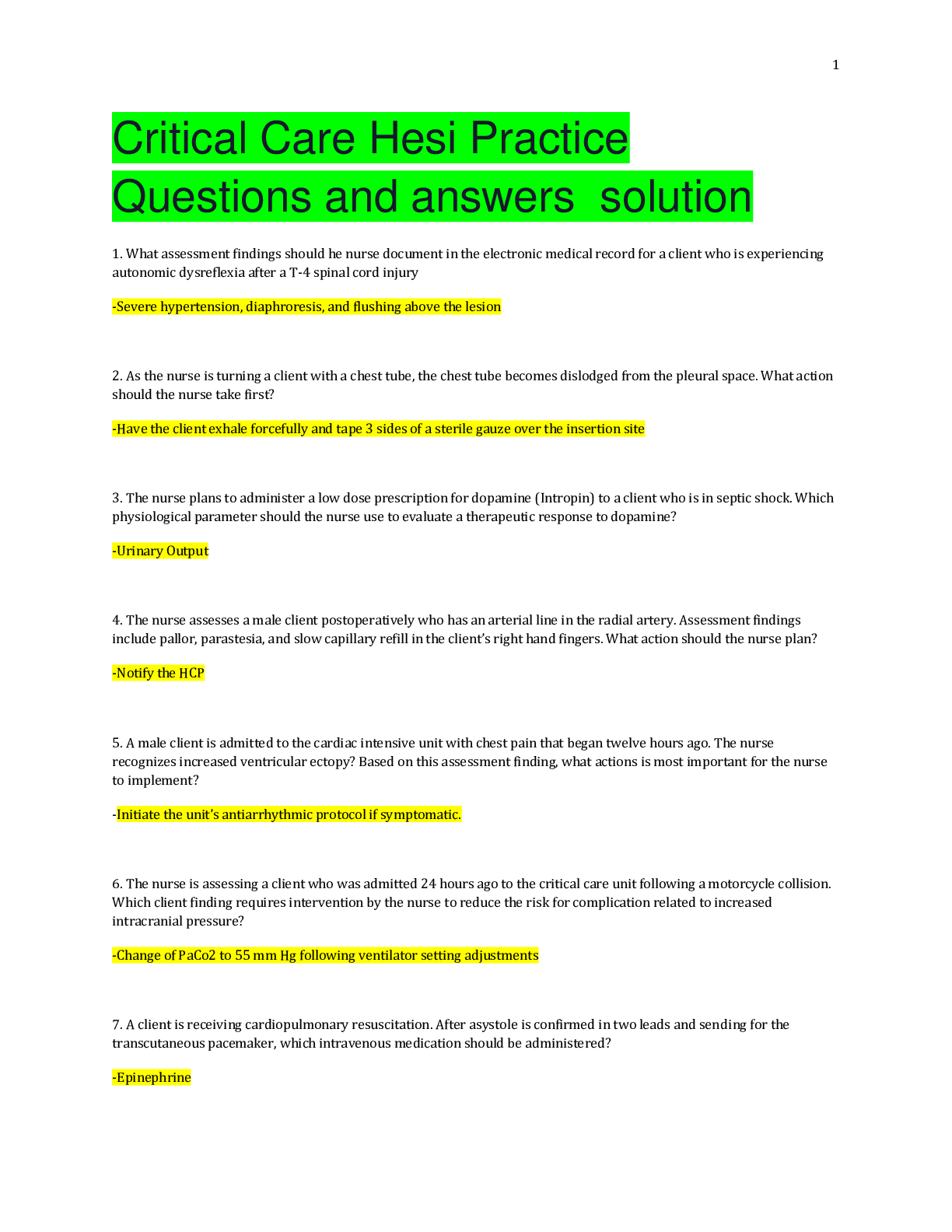
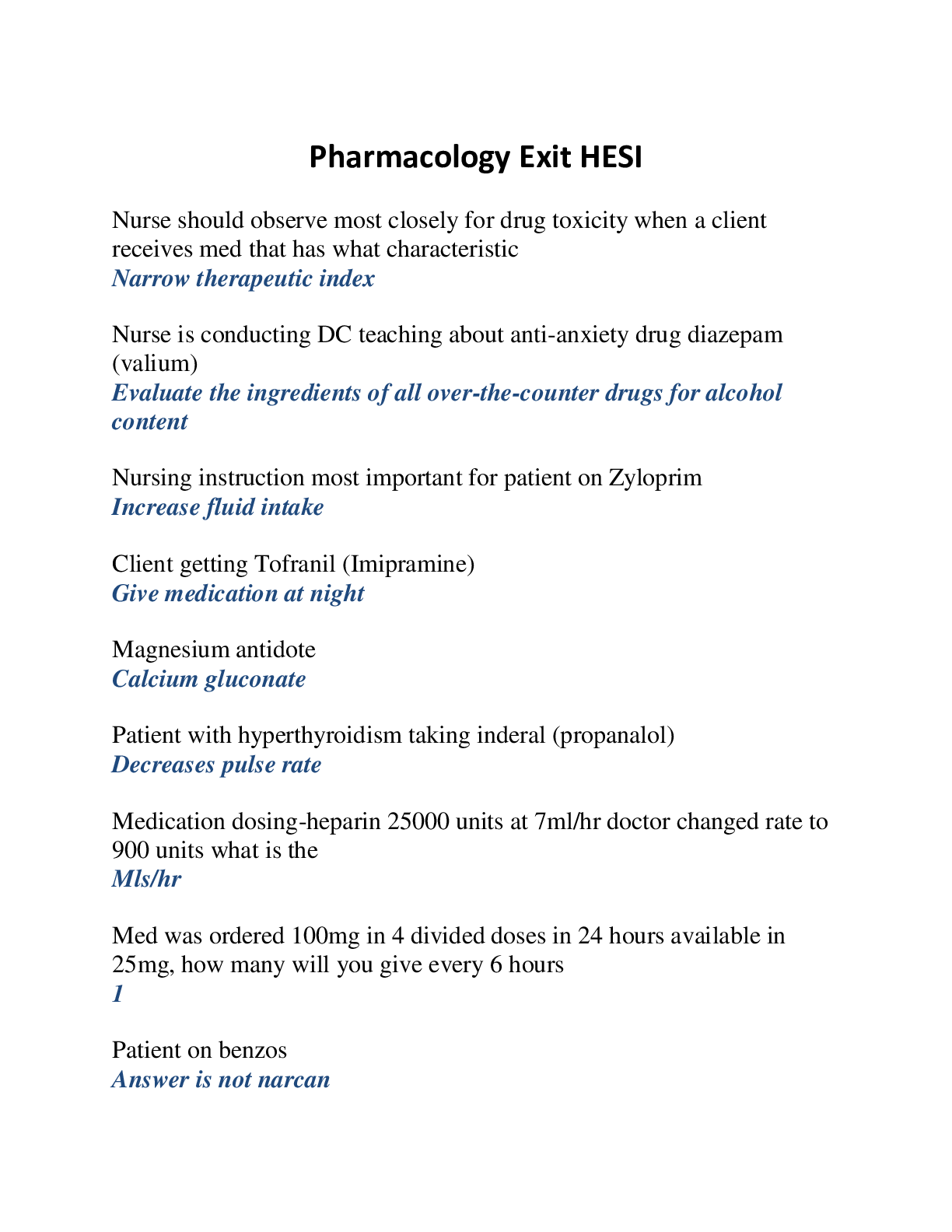
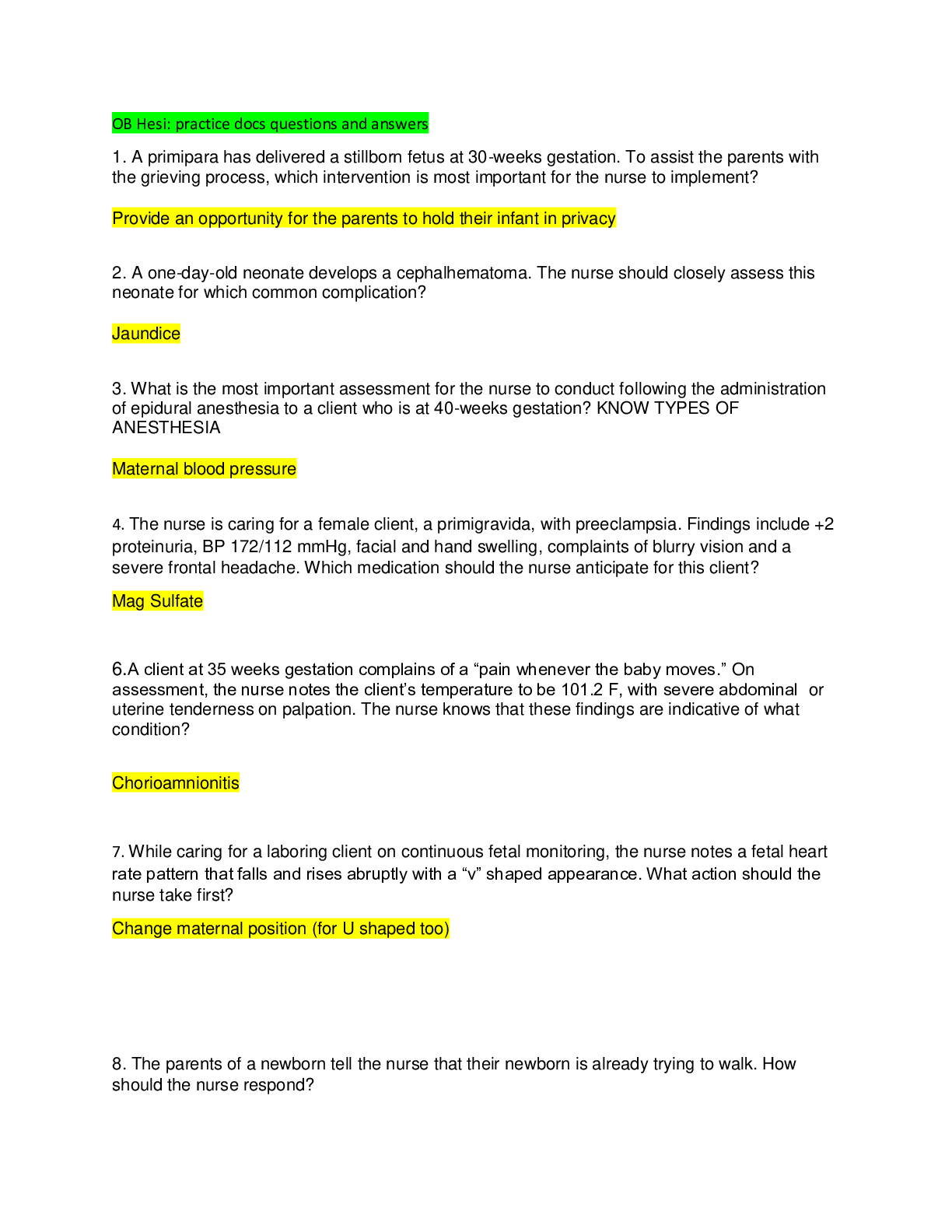

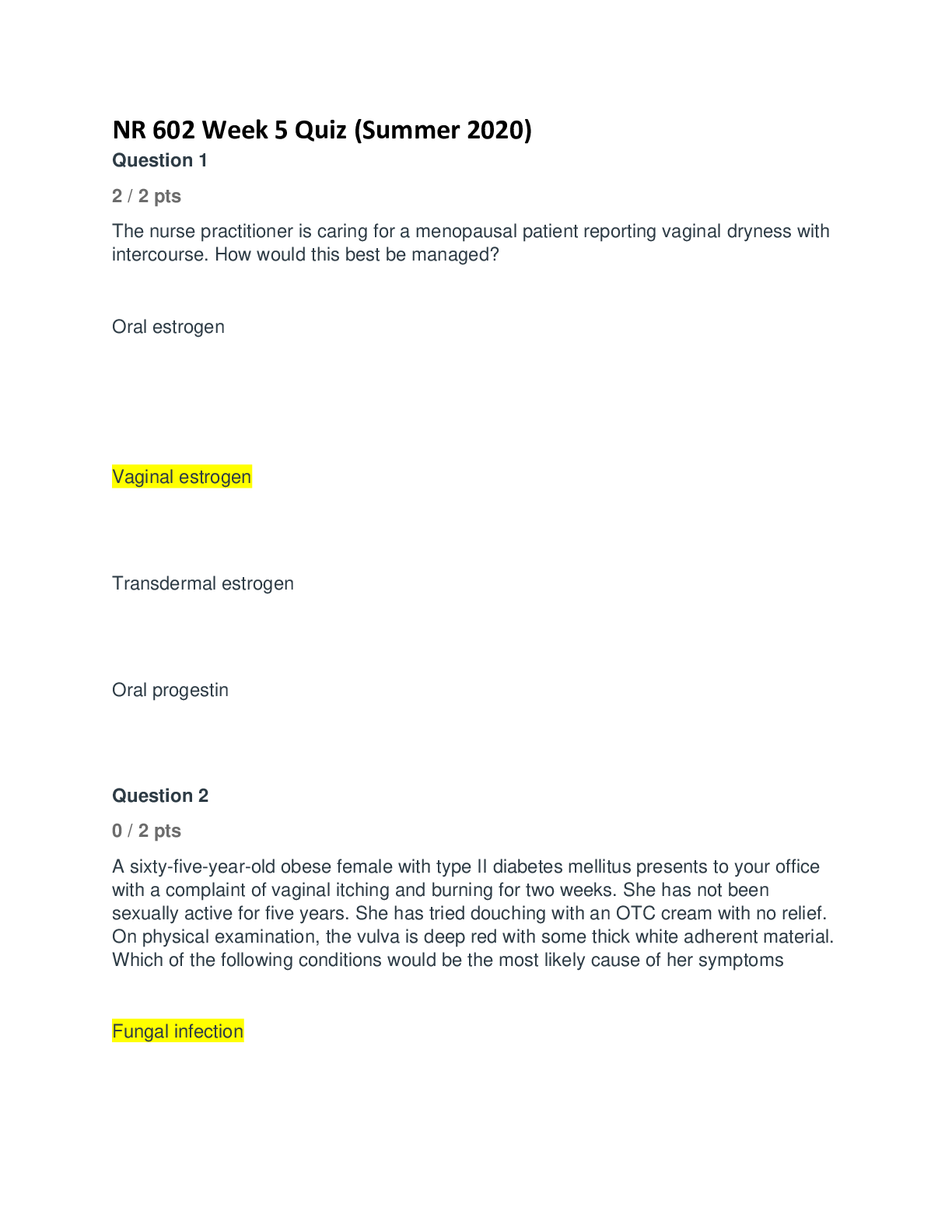
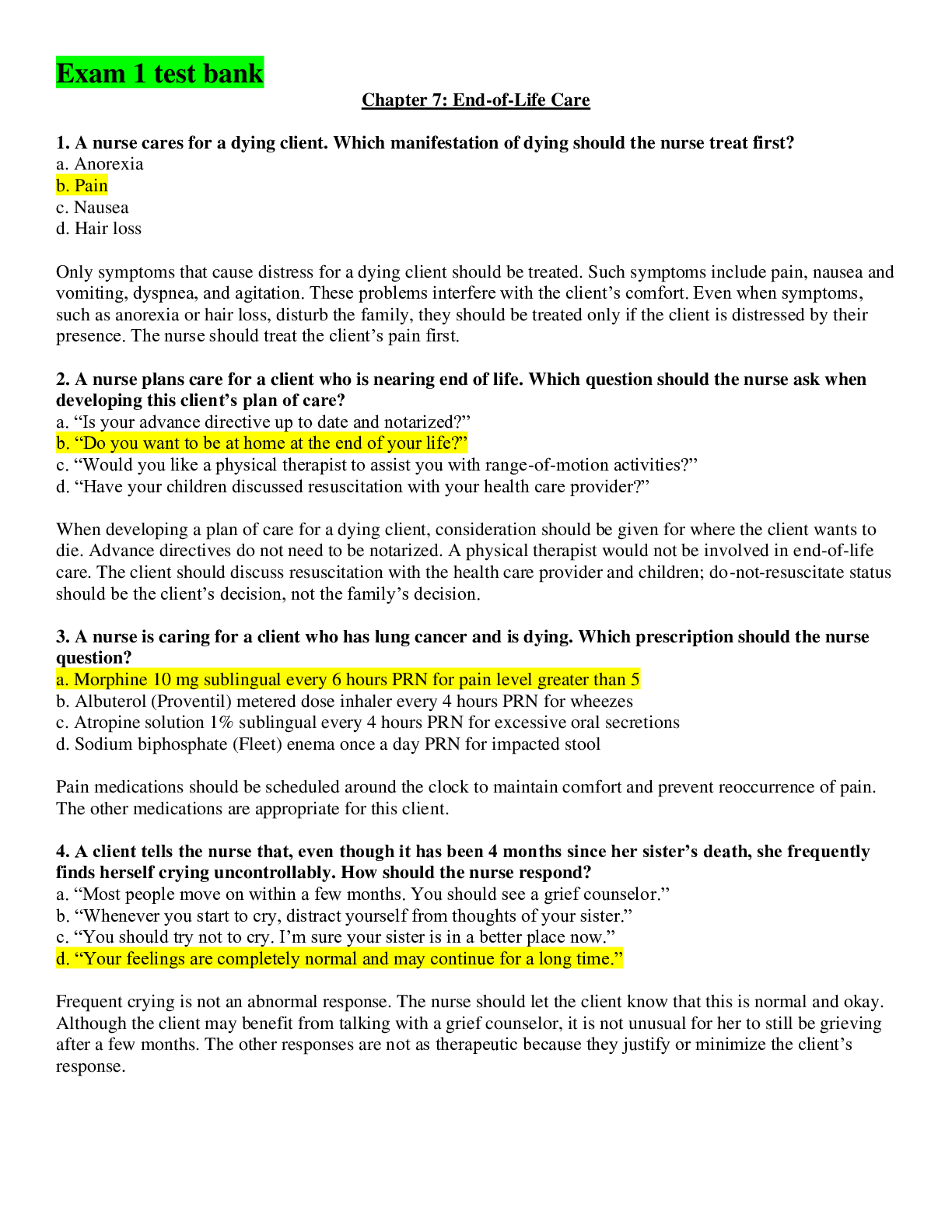

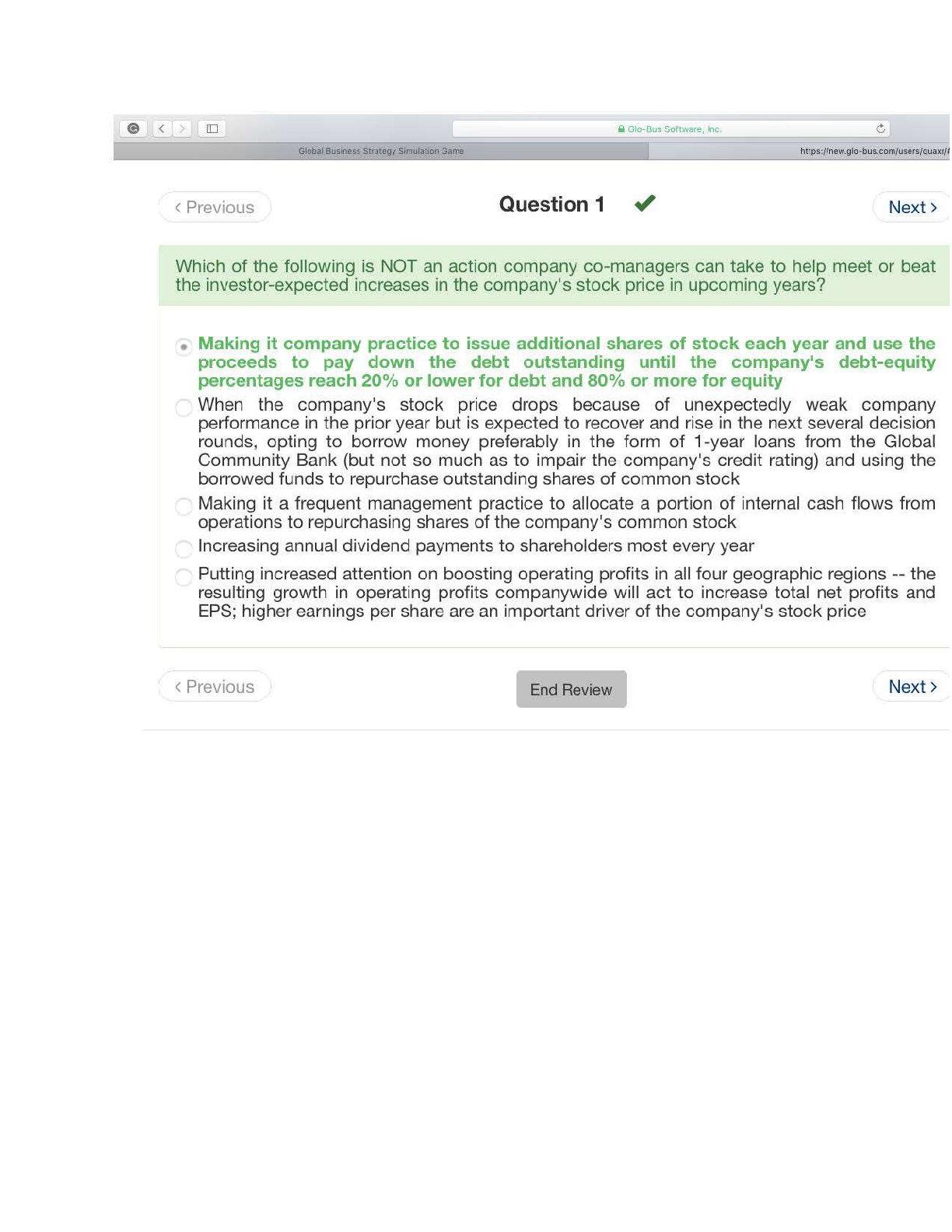
.png)
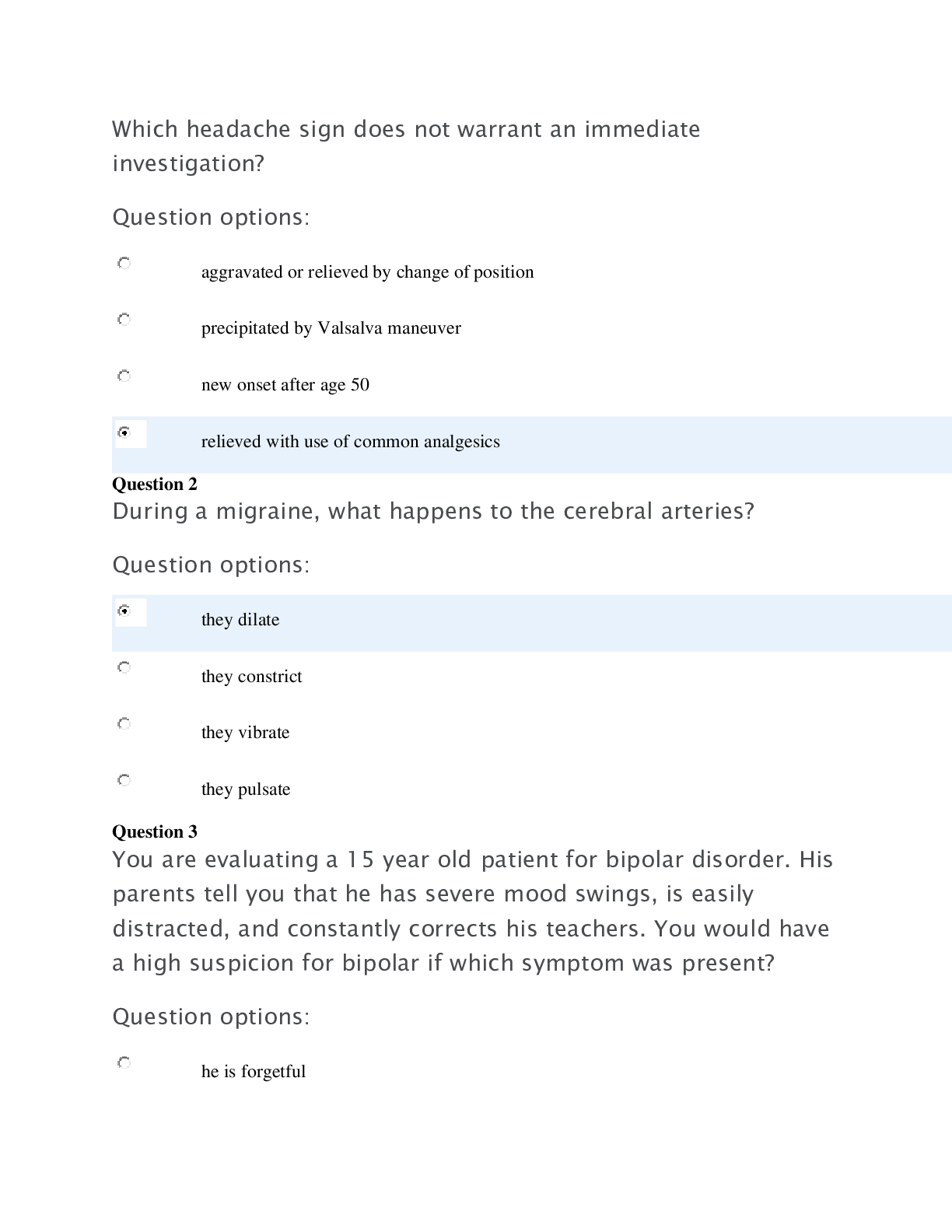

.png)
